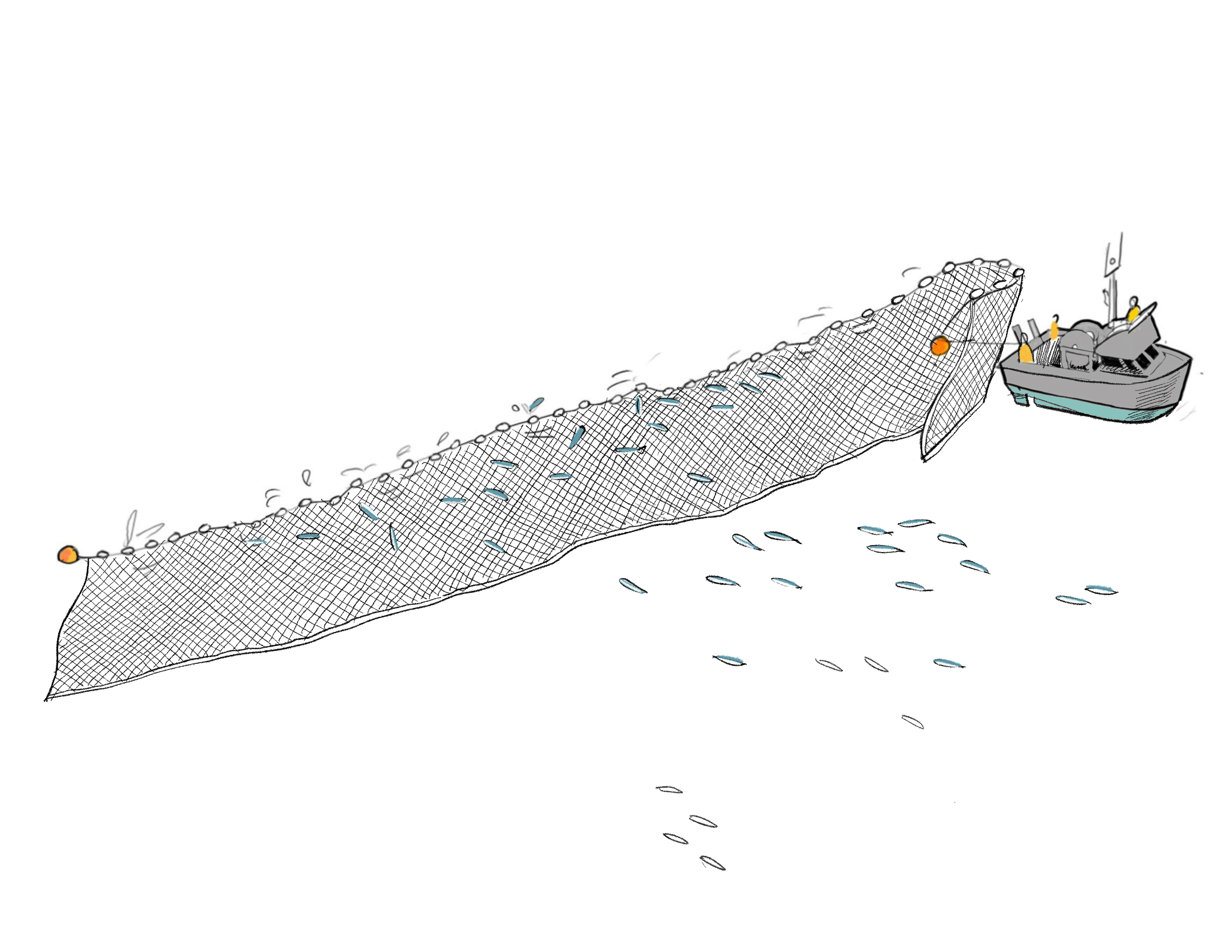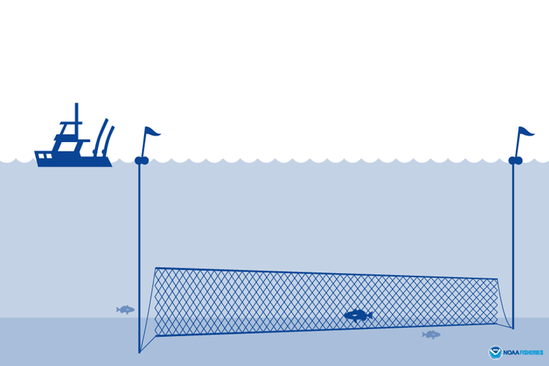
Gillnets are typically made of monofilament or multifilament nylon mesh. The mesh size is designed to allow fish to get their heads but not their bodies through the netting, resulting in their capture. A variety of regulations and other factors including area fished and target species determine the mesh size, length, and height of commercial gillnets.
Two primary types of commercial gillnets are used on the U.S. West Coast: set gillnets and drift gillnets. Set gillnets are typically used to catch fish near the ocean bottom, including California halibut, white seabass and Pacific herring. The nets are attached to poles and fixed directly to or through an anchor system above the ocean bottom to keep the nets stationary. To minimize capture of non-target species, the nets have breakaway panels and anchors. Similar to other fixed gear like crab pots, set gillnets are left to soak for a certain amount of time, usually 24 to 48 hours. The nets are then retrieved, the contents removed, and the target species (if of legal size and marketable quality) stored in refrigerated seawater in the hold or seawater tanks on deck. The net is then set again in the same area or moved to a different area depending on how many fish were caught.

A different style of set gillnet is used by some Treaty Tribes in Washington to fish for chinook, coho, sockeye, and chum salmon. One end of the net is attached to an anchor on shore and the other end of the net is stretched into the river, set perpendicular to the flow of the river to intercept swimming salmon.
In some areas, drift gillnets are used to catch swimming fishes such as chinook salmon, coho salmon, sockeye salmon, chum salmon and swordfish. These nets are attached to the boat and drift behind it below the ocean surface. The net is kept afloat by a system of weights and buoys at a depth appropriate for the species being targeted. Drift gillnets are being phased out in the open ocean off California, with harpoons and/or deep-set buoy gear being used instead.
